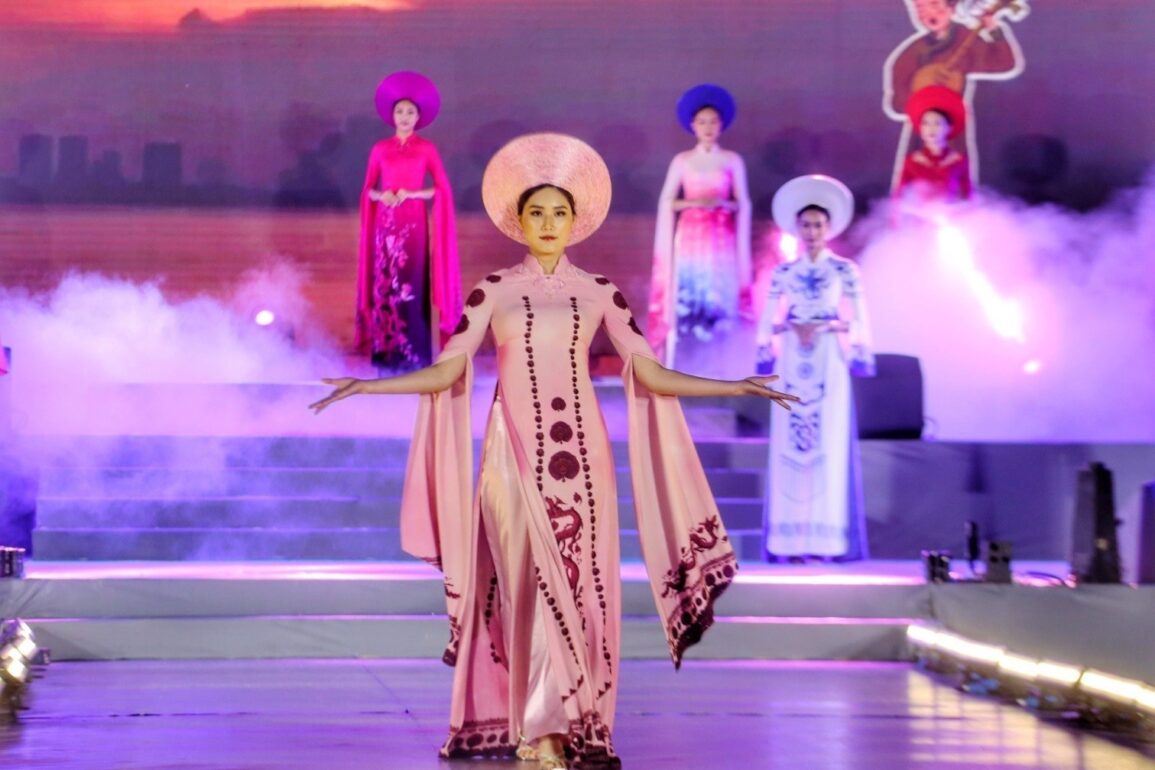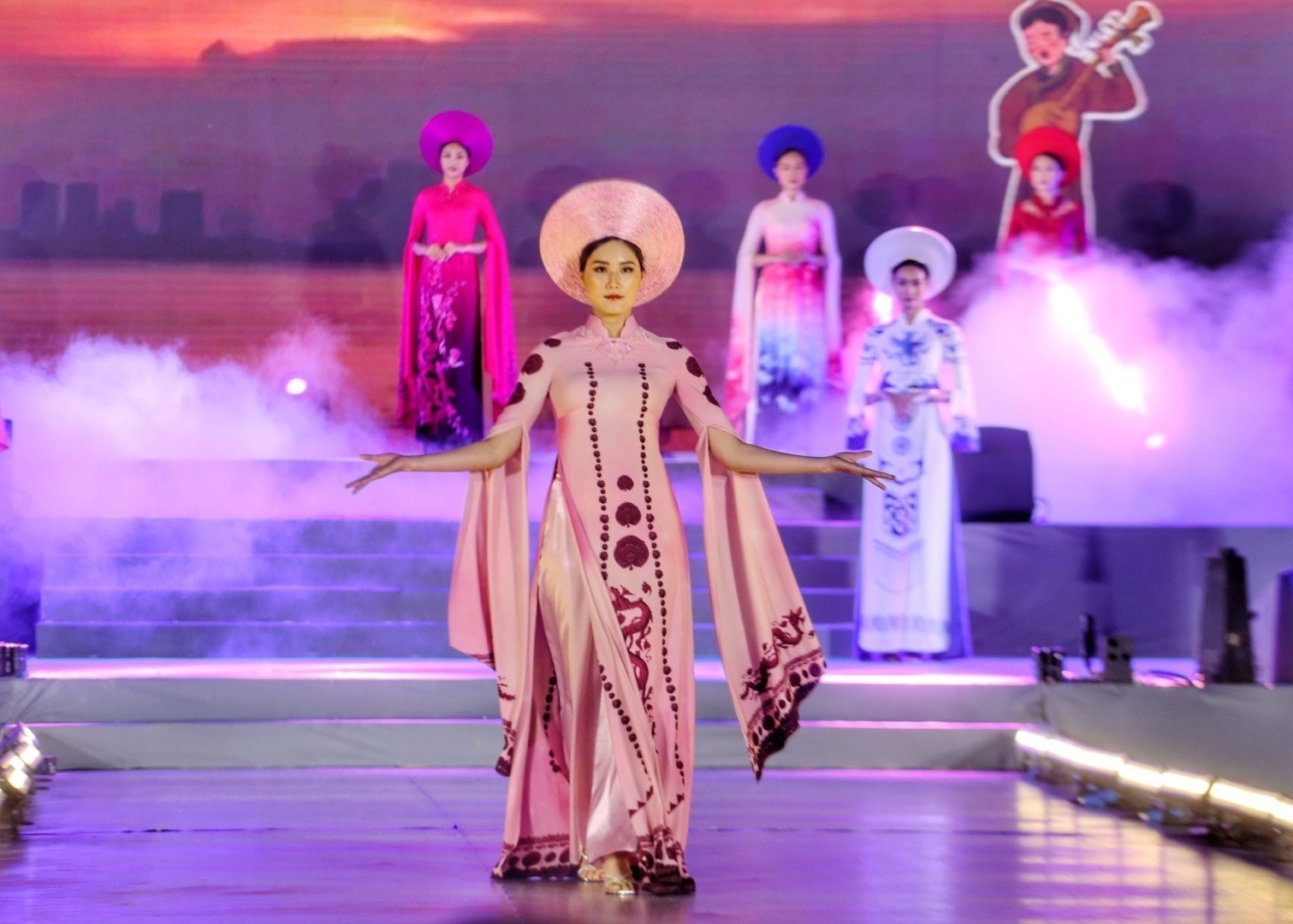
For generations, Ao Dai (traditional long tunic dress) has embodied the beauty of Vietnamese culture and become an indispensable dress for significant events in the country and among its people.
Ao Dai has established itself as a cultural symbol connected with the image of Vietnamese women. The dress has seen significant changes through the years but its typical traditional characteristics have been preserved, contributing to enhancing the charming beauty of Vietnamese women.
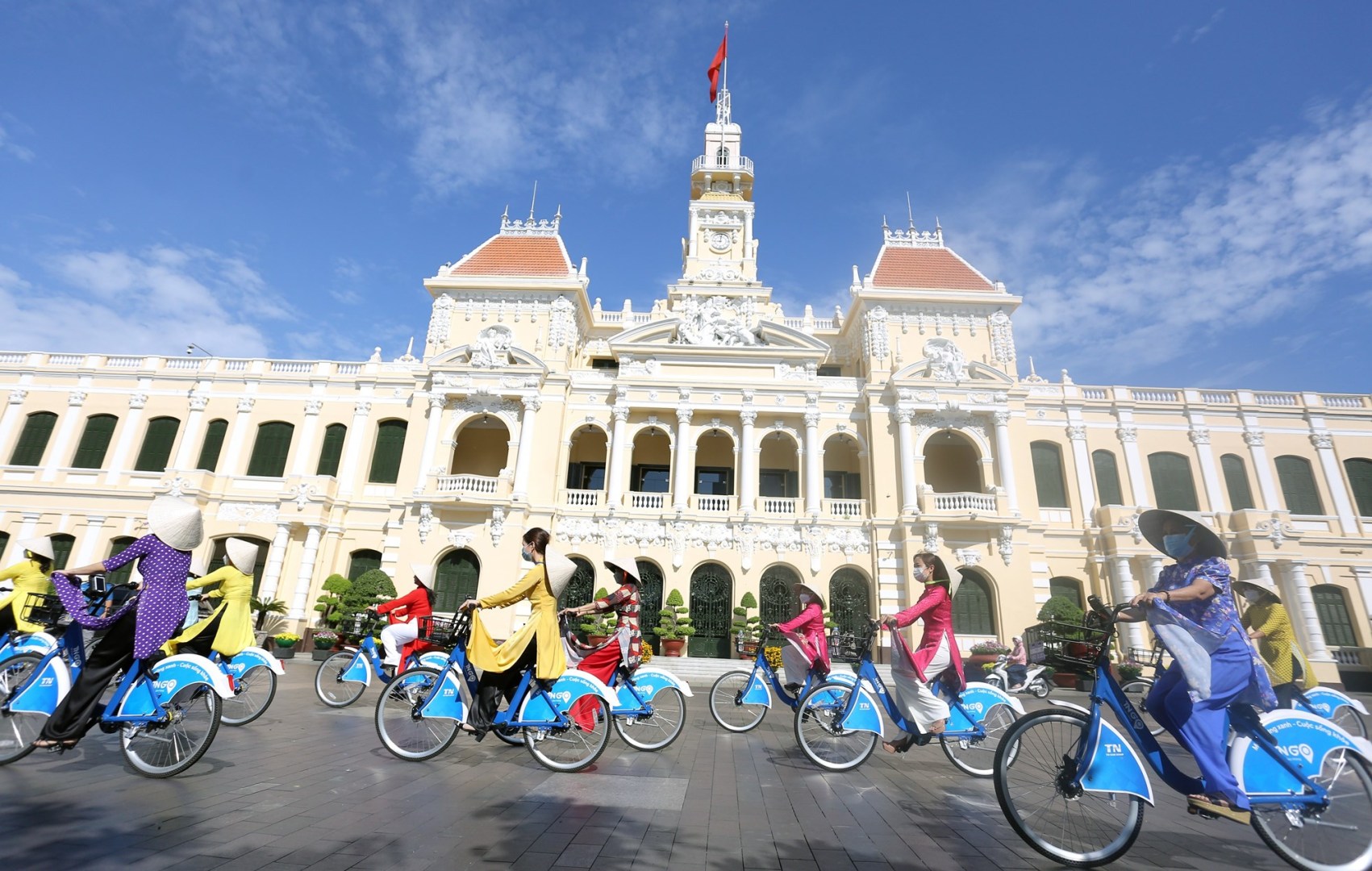
Over the past hundreds of years, Ao Dai has been an endless source of inspiration for movies, music and fine art, and part of the soul of Vietnamese people at home and abroad.
Each country has its own traditional attire, such as the Kimono of Japan, Hanbok of the Republic of Korea, or Kilt of Scotland. Vietnamese are proud of their “Ao Dai”. The word “Ao Dai” has been included in the Oxford dictionary that explains Ao Dai is a Vietnamese woman’s long-sleeved tunic with ankle-length panels at front and back, worn over trousers.
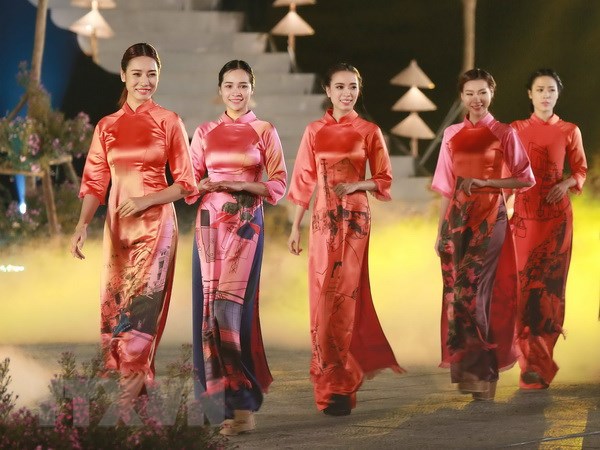
Beyond being a consumer product, Ao Dai holds a more significant role as a distinctive cultural product imbued with national identity and a symbol of Vietnamese women.
There has never been an official document designating Ao Dai as the national costume. But in the minds of Vietnamese people and the eyes of international friends, Ao Dai is a symbol of Vietnamese culture.
The dress is worn on various occasions, from family gatherings to diplomatic events, art performances, festivals (especially the traditional Tet – Lunar New Year holiday), fashion shows and beauty contests, both at home and abroad.
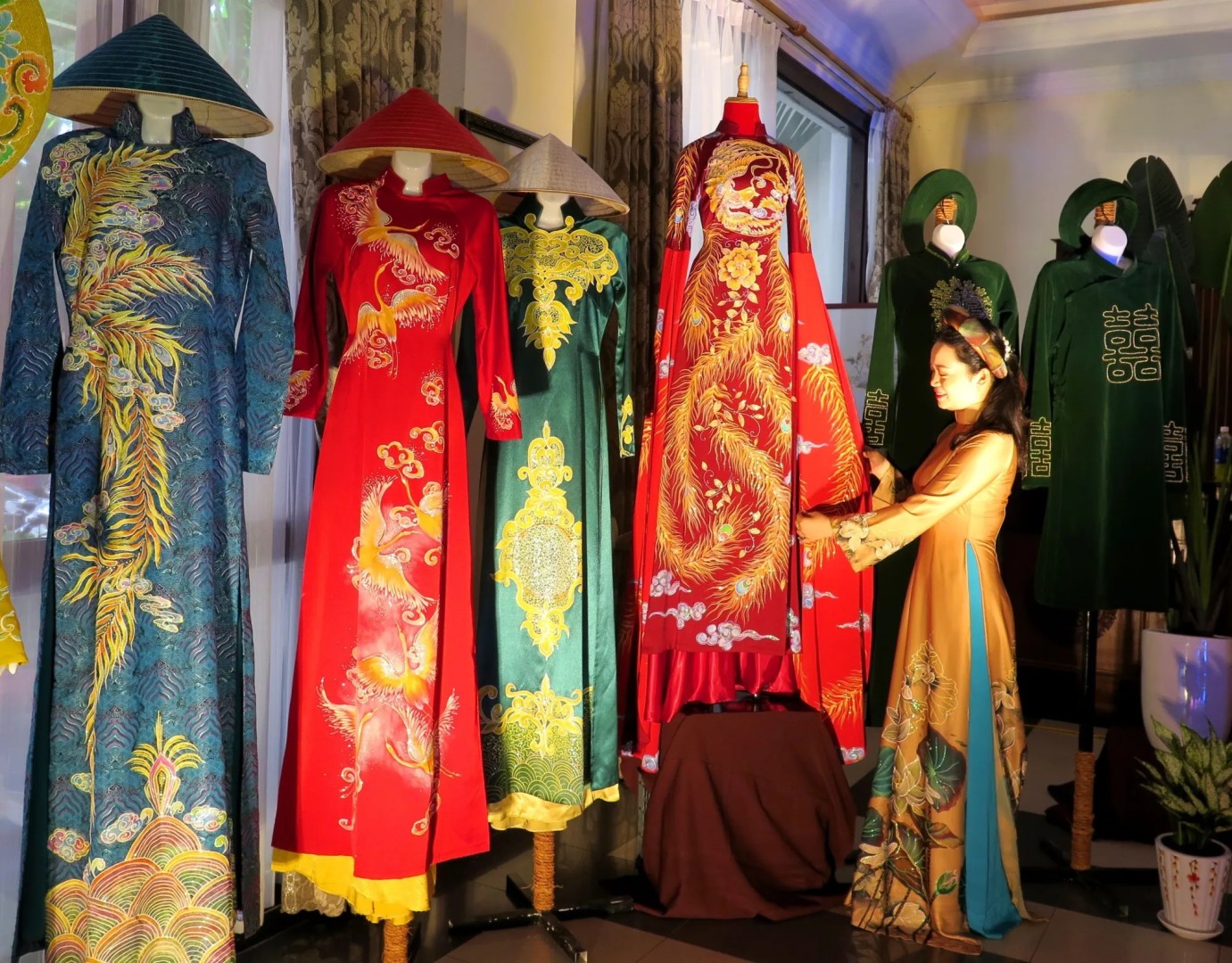
Unlike traditional dresses of many other countries worldwide, it is not complicated to put on the Ao Dai. While it is simple to wear, the dress highlights the beauty of women. Ao Dai, therefore, has become a popular attire of Vietnamese women.
The traditional dress has played an important role in promoting Vietnam’s tourism. Tourists to the country, especially women, often brought home Ao Dai as a special souvenir.
Over the past years, many designers have breathed new life into Ao Dai with new designs. Such designers as Minh Hanh, Vo Viet Chung and Si Hoang have contributed to promoting Ao Dai in the regional and international fashion industry.
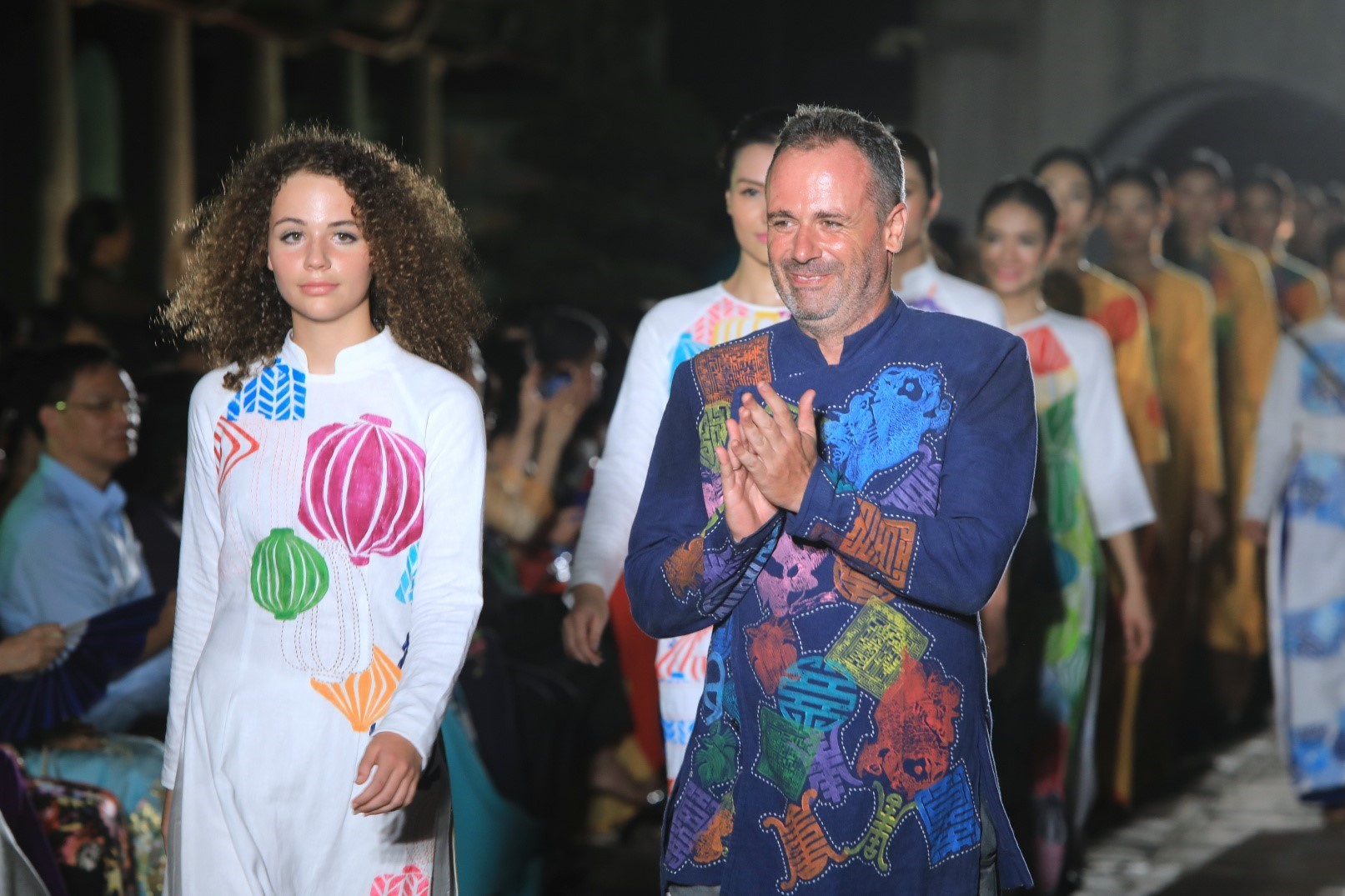
History of Ao Dai
Although the exact origin of Ao Dai is unknown, researchers concluded that its history dates back thousands of years. It has undergone many transformations to reach its current form. The oldest image preserved so far of Ao Dai was “Ao Giao Linh” (cross-collared robe) in about 1744 when Southern Vietnam was ruled by Lord Nguyen Phuc Khoat while the North was under the control of Trinh Lords. It was then worn with black skirts and a cloth belt.
Phan Thanh Hai, Director of the Department of Culture, Sports and Tourism of the central province of Thua Thien-Hue, said Lord Nguyen Phuc Khoat deserved great merit in making Ao Dai the official dress of that time.
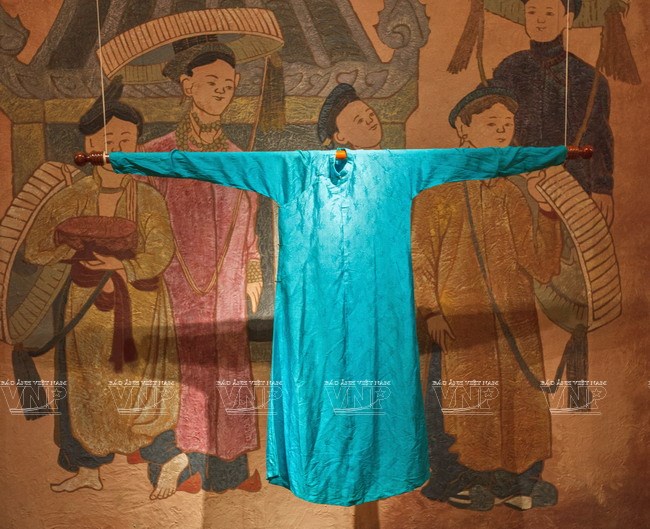
During the 19th century, the outfit evolved into the “Ao Ngu Than” (five-panel gown). It then has two flaps sewn together in the back, two flaps in the front, and a flap hidden underneath the main front flap. However, Ao Ngu Than is shorter and not so tight as the modern Ao Dai.
In the 1930s, artist Cat Tuong (or Le Mur) took Ao Dai to new advanced level when he combined Western dress style with traditional Ao Dai. The new outfit was resized to fit women’s bodies with a floor-length and curved flap, a pinched waist, along with a Western-style heart-shaped collar, and puffed sleeves.
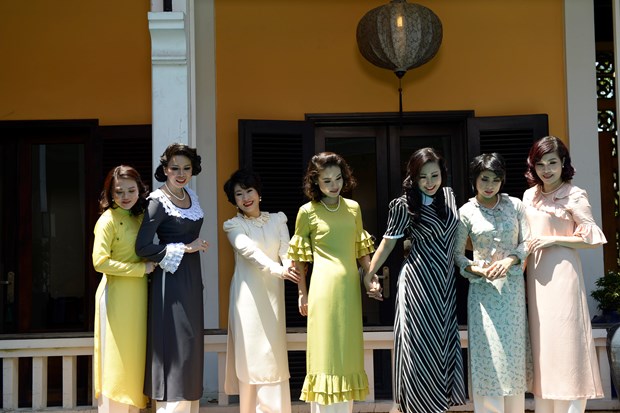
After the Ao Dai Lemur faded into history, designer Le Pho again changed the Ao Dai, adding elegant lines that were more suitable for Vietnamese women and culture.
In the 1960s, Dung, a Saigon-based designer altered the traditional costume, adding raglan sleeves and connecting the front panel of the Ao Dai to the back, with the ingenious use of buttons that went from the collar to the armpit and down to the hip. This created a comfortable dress that was snug on the female body while showing fewer wrinkles and giving more ease of movement.
Today, the Vietnamese Ao Dai has seen various modifications in terms of styles and materials, from traditional to avant-garde. Yet, it maintains its uniqueness and charm that is unmatched by any other attire.

Honouring Ao Dai
Due to its value, Vietnam hosts numerous competitions and ao dai shows to preserve and promote this unique attire.
Notably, the annual Ao Dai Festival receives attention and investment from the government, aiming to honour and preserve the traditional outfit.
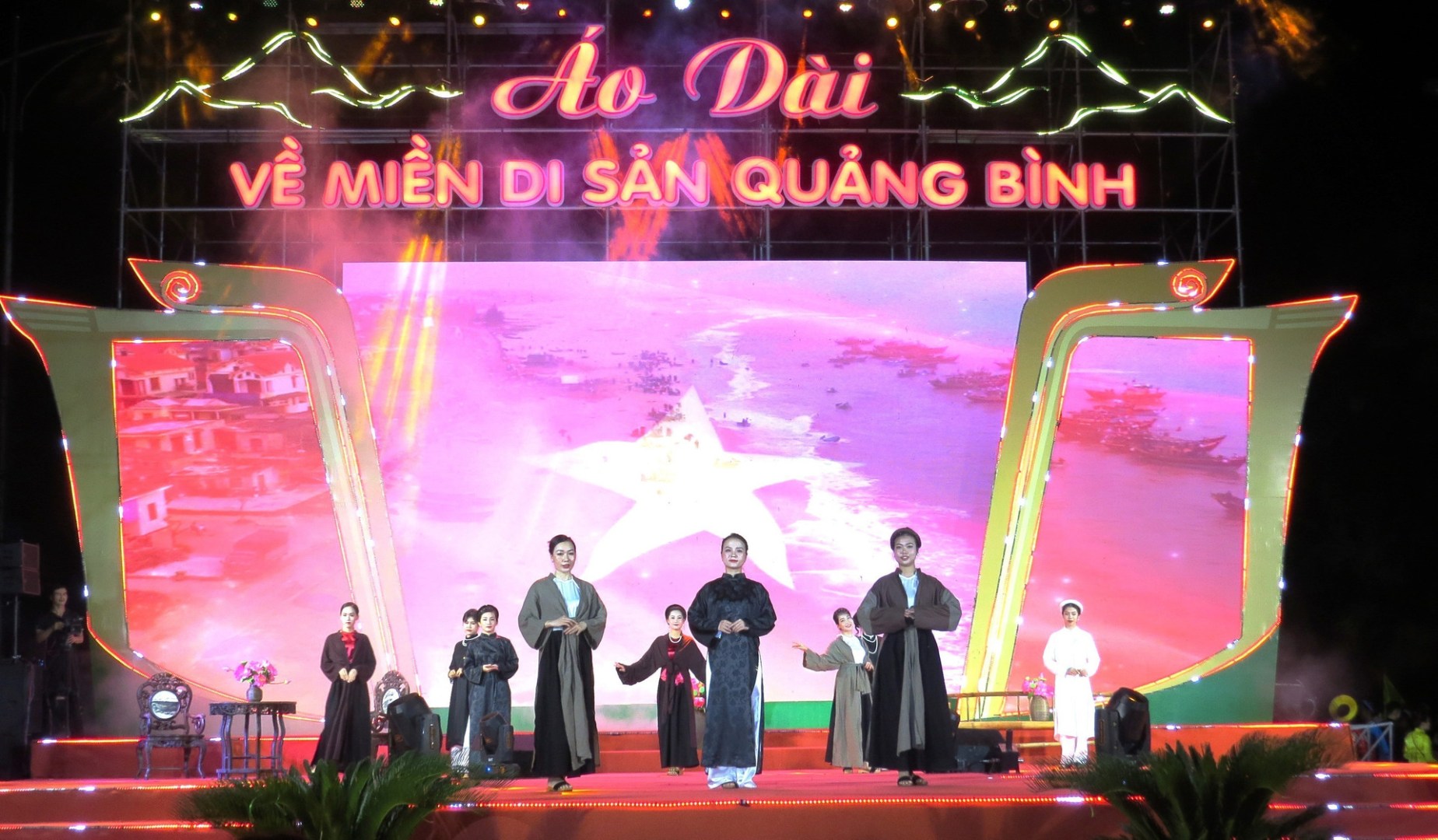
This is not only an opportunity for Vietnamese people to show off their elegant and sophisticated beauty, but also offers a chance for Ao Dai designers to show off their talent.
Ao Dai not only exists in the minds of the Vietnamese but also finds its way into various forms of art such as painting, music, and cinema. Such a simple dress has stood the test of time, spanning hundreds of years without showing any signs of fading.
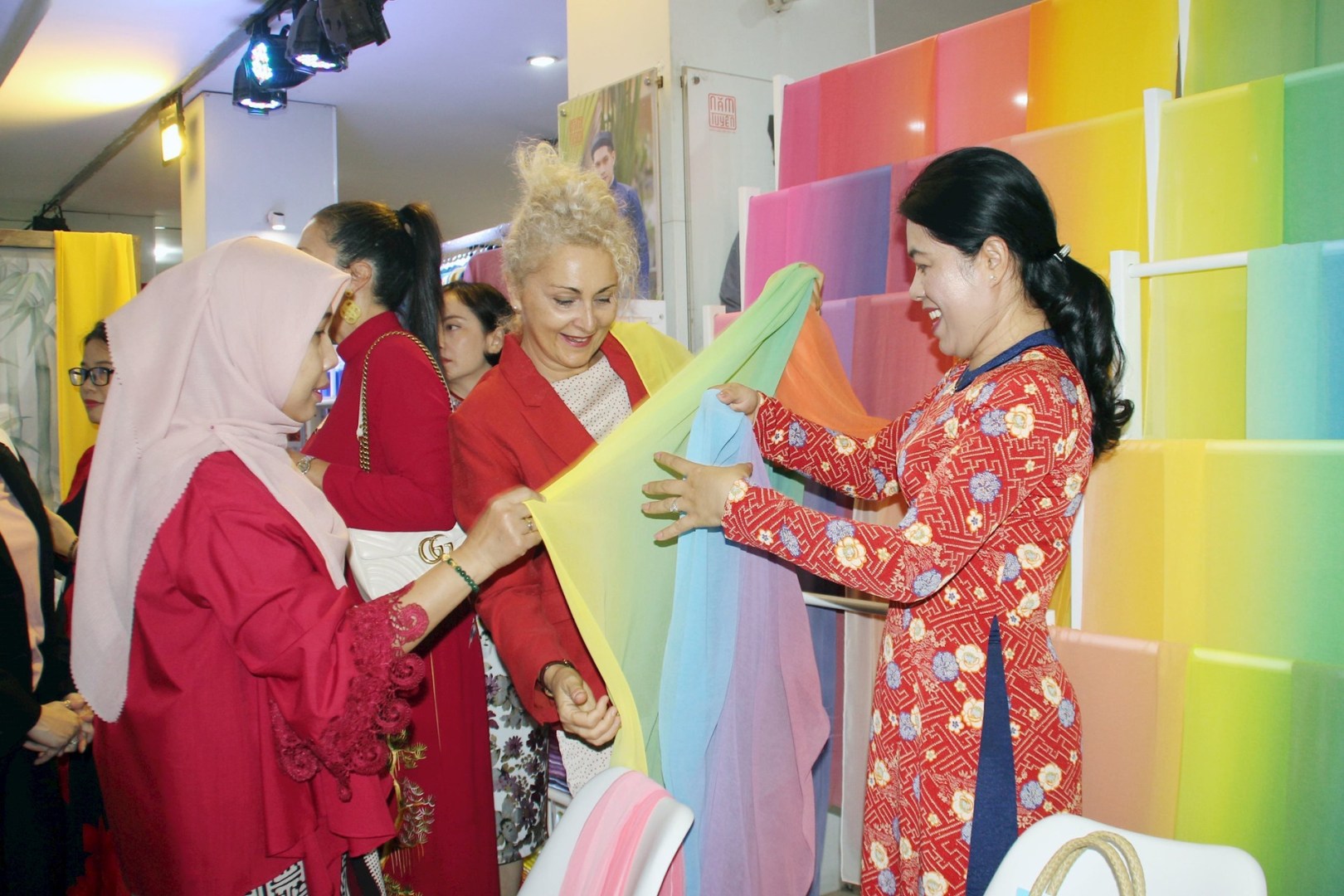
The Ao Dai is also promoted by different regions in Vietnam through various events. For instance, Ao Dai festival has formed part of the Hue Festival which gathers various collections of dress by famous designers.
Currently, “Ao Dai Hue” has become a special tourism product that has left a good impression on domestic and foreign visitors, contributing to preserving and promoting the nation’s traditional cultural values.
In Ho Chi Minh City, after the ninth edition, this year’s Ao Dai Festival was celebrated with many prominent figures serving as ambassadors for the event, including artists, travel bloggers, business people, fashion designers, diplomats, and teachers.
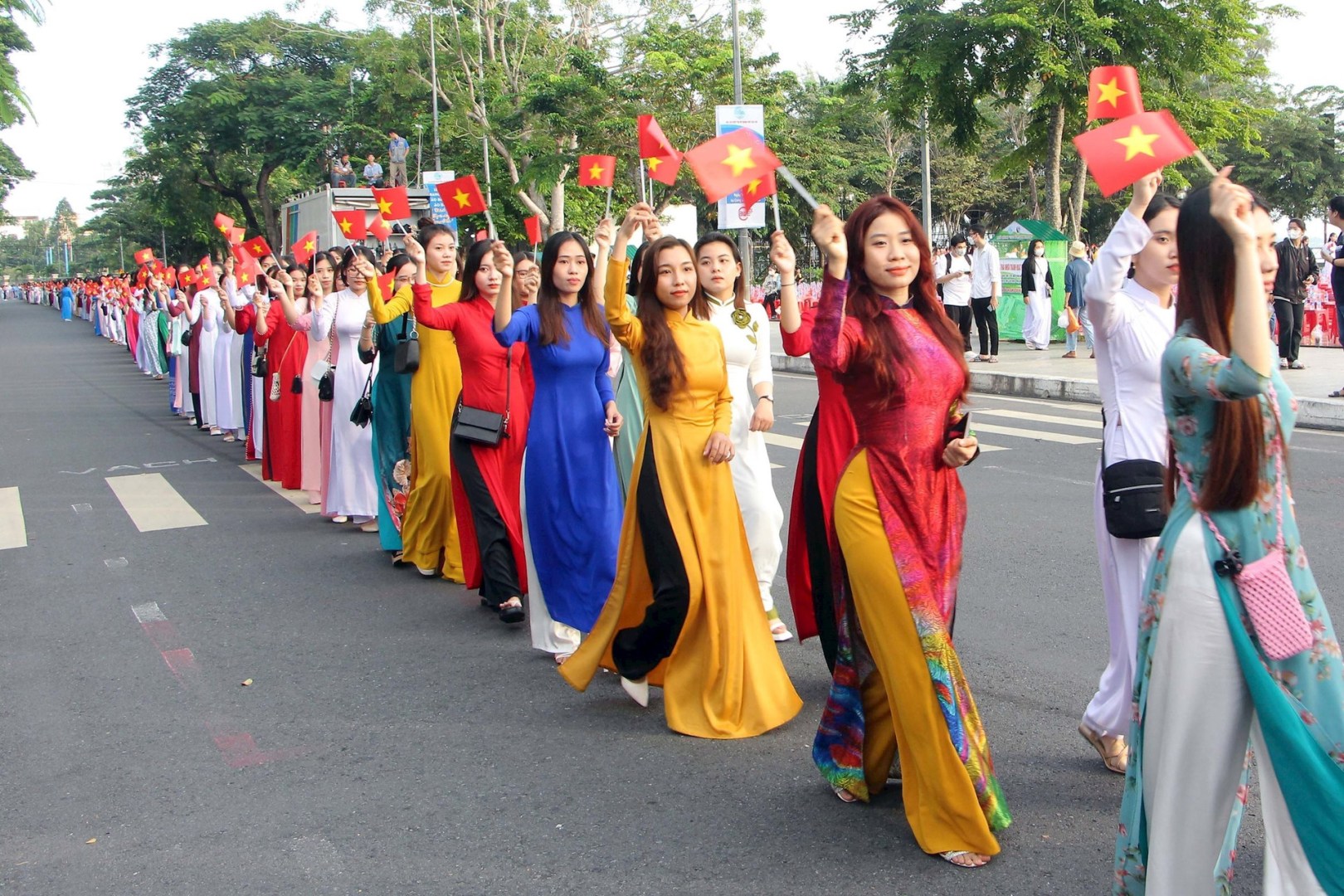
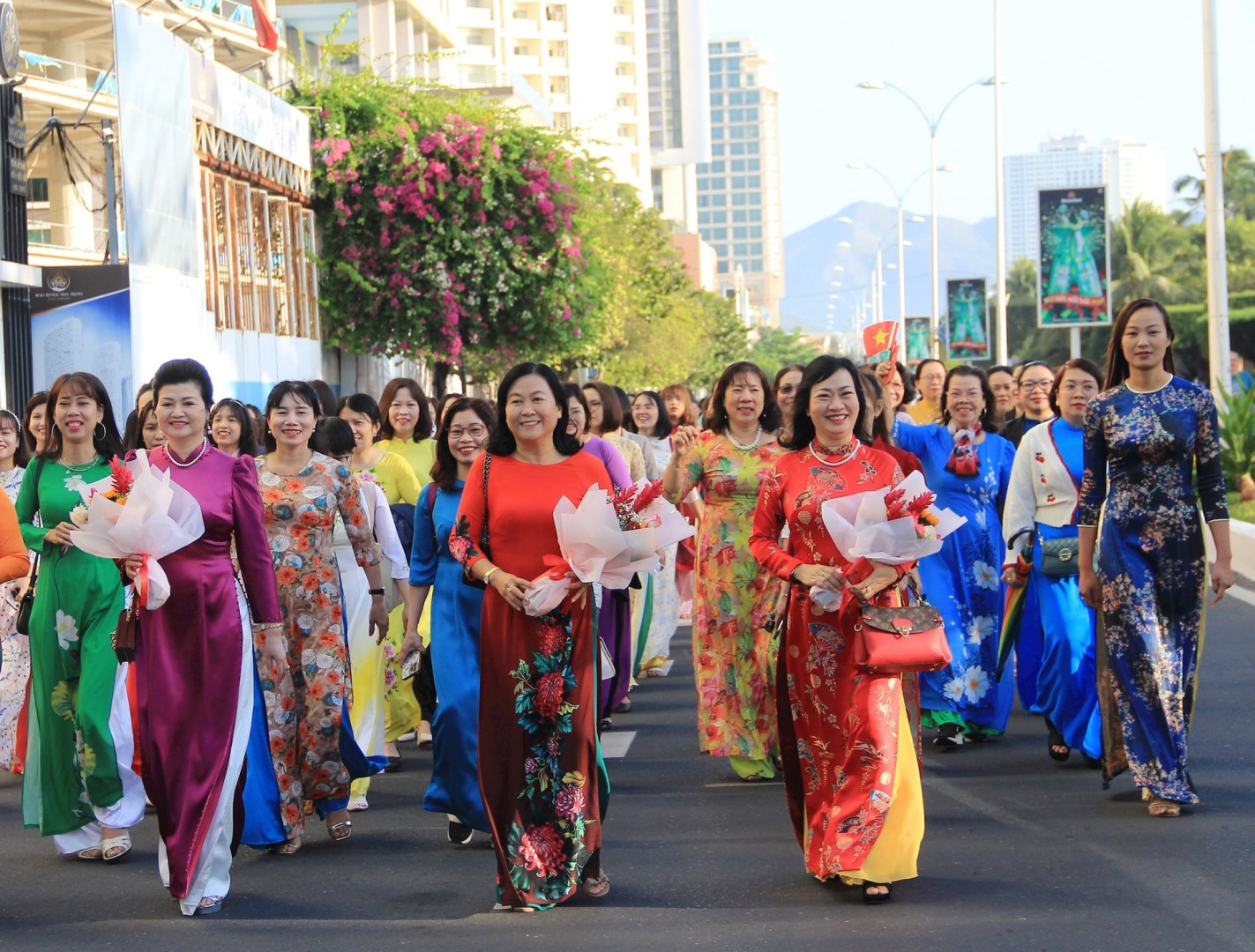

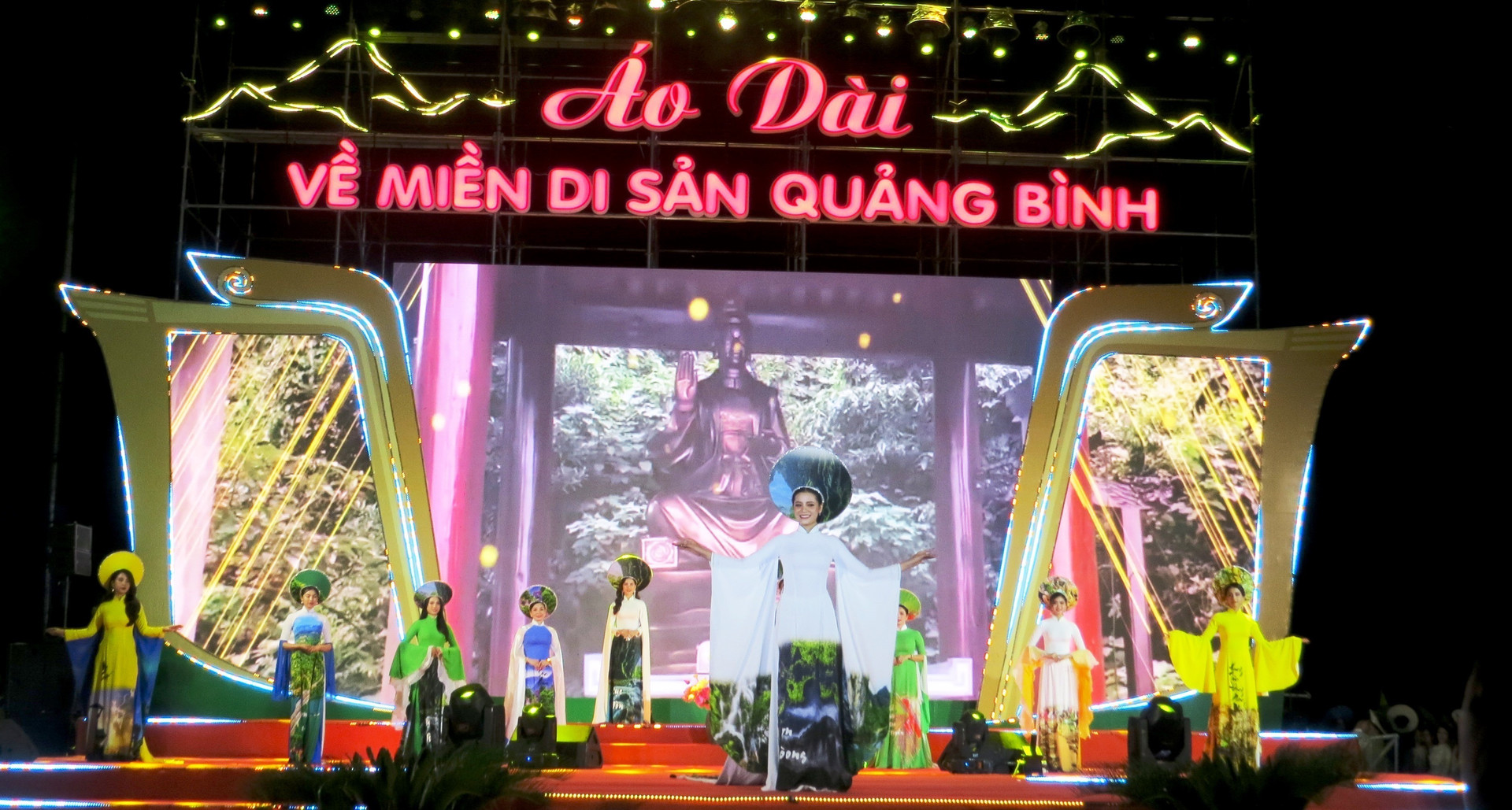
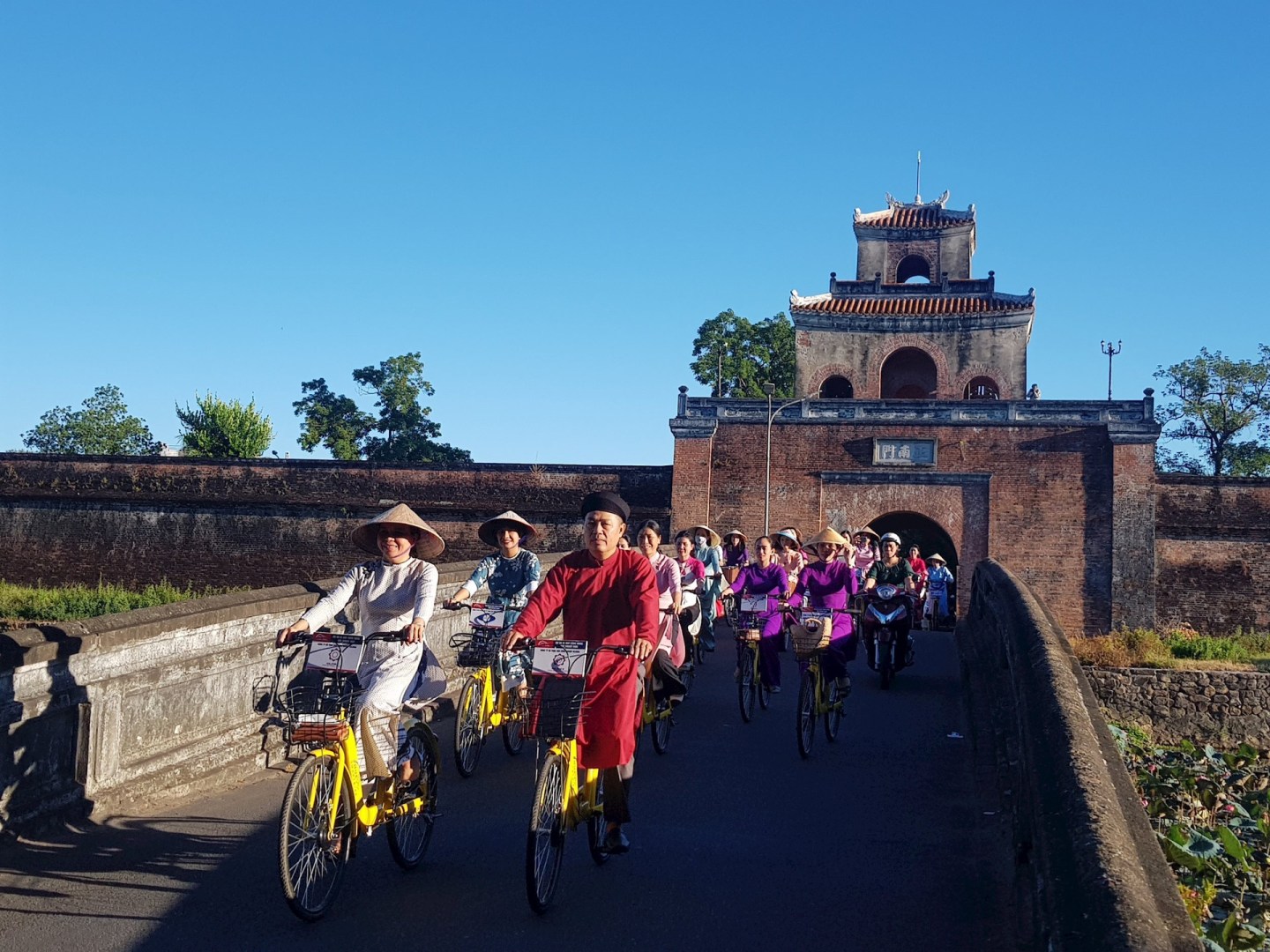
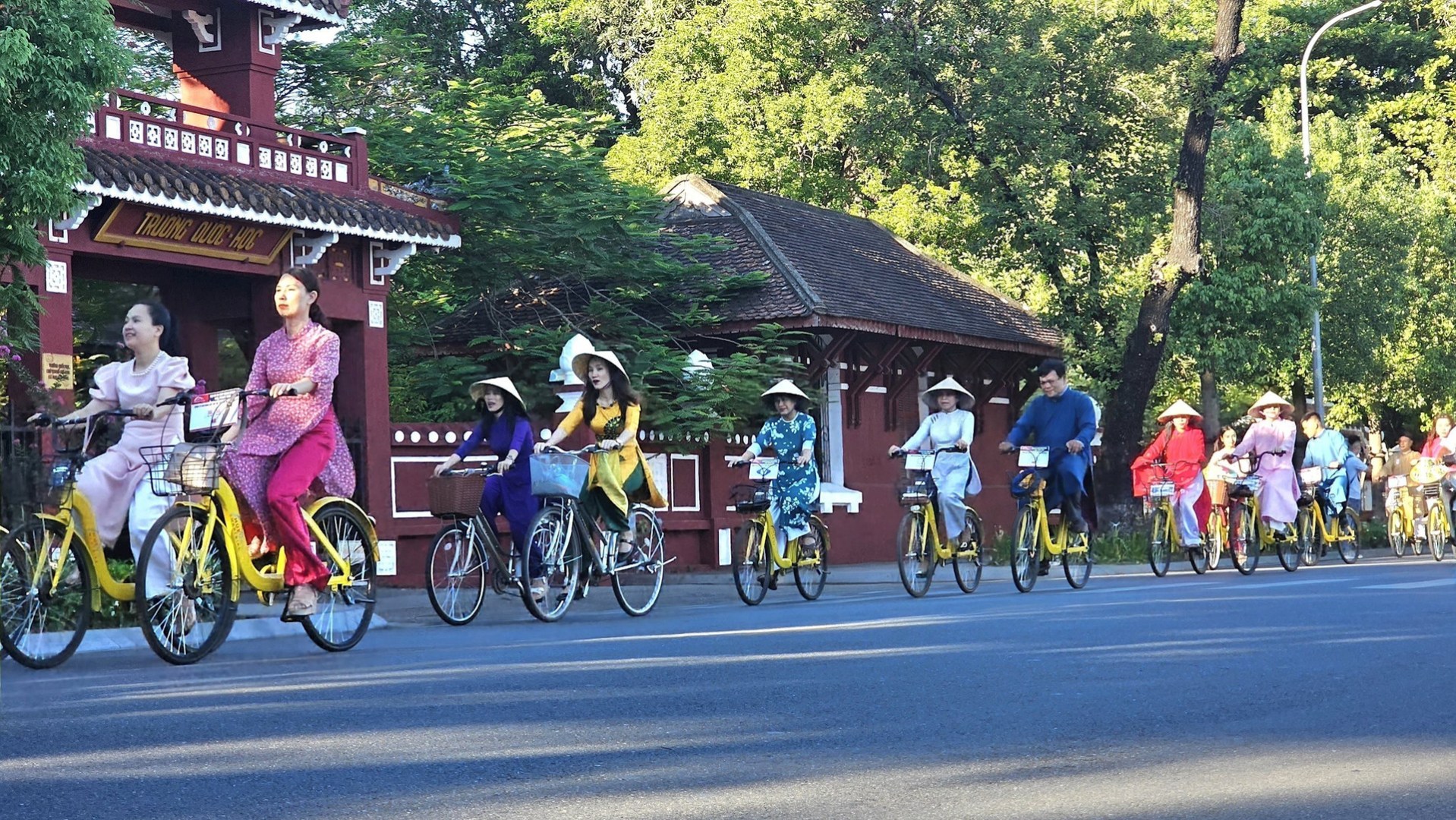

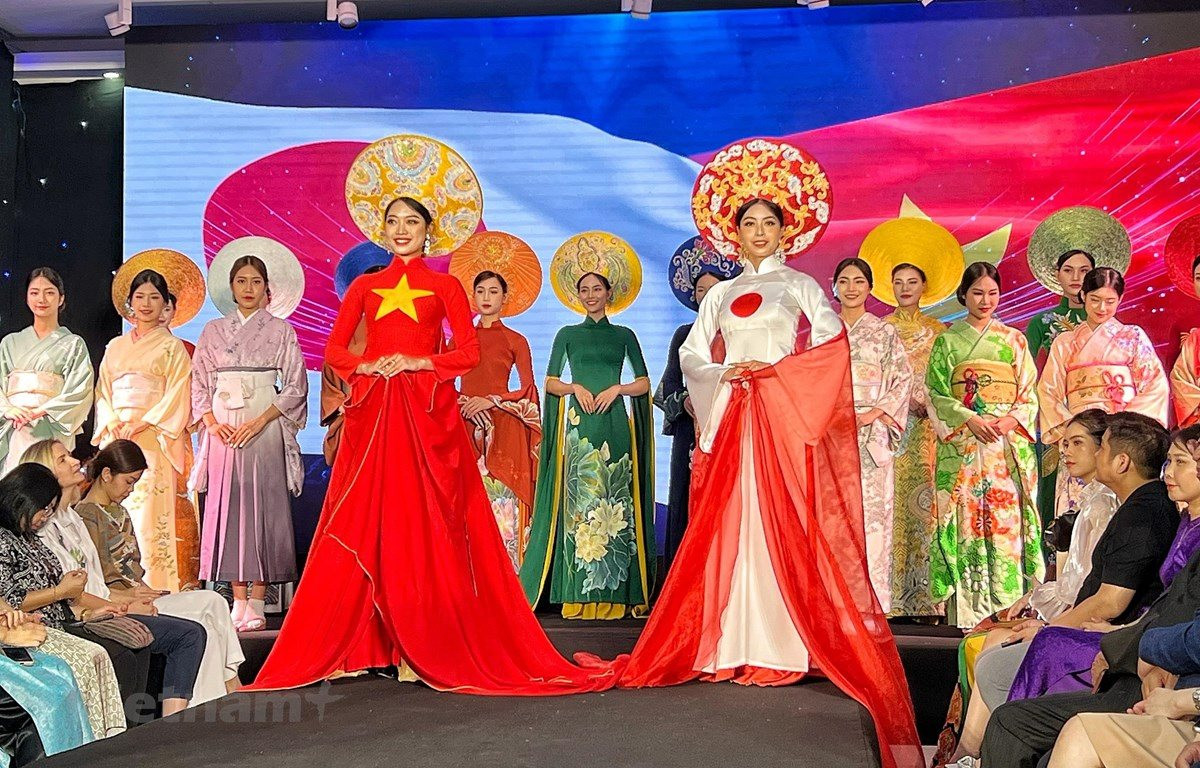
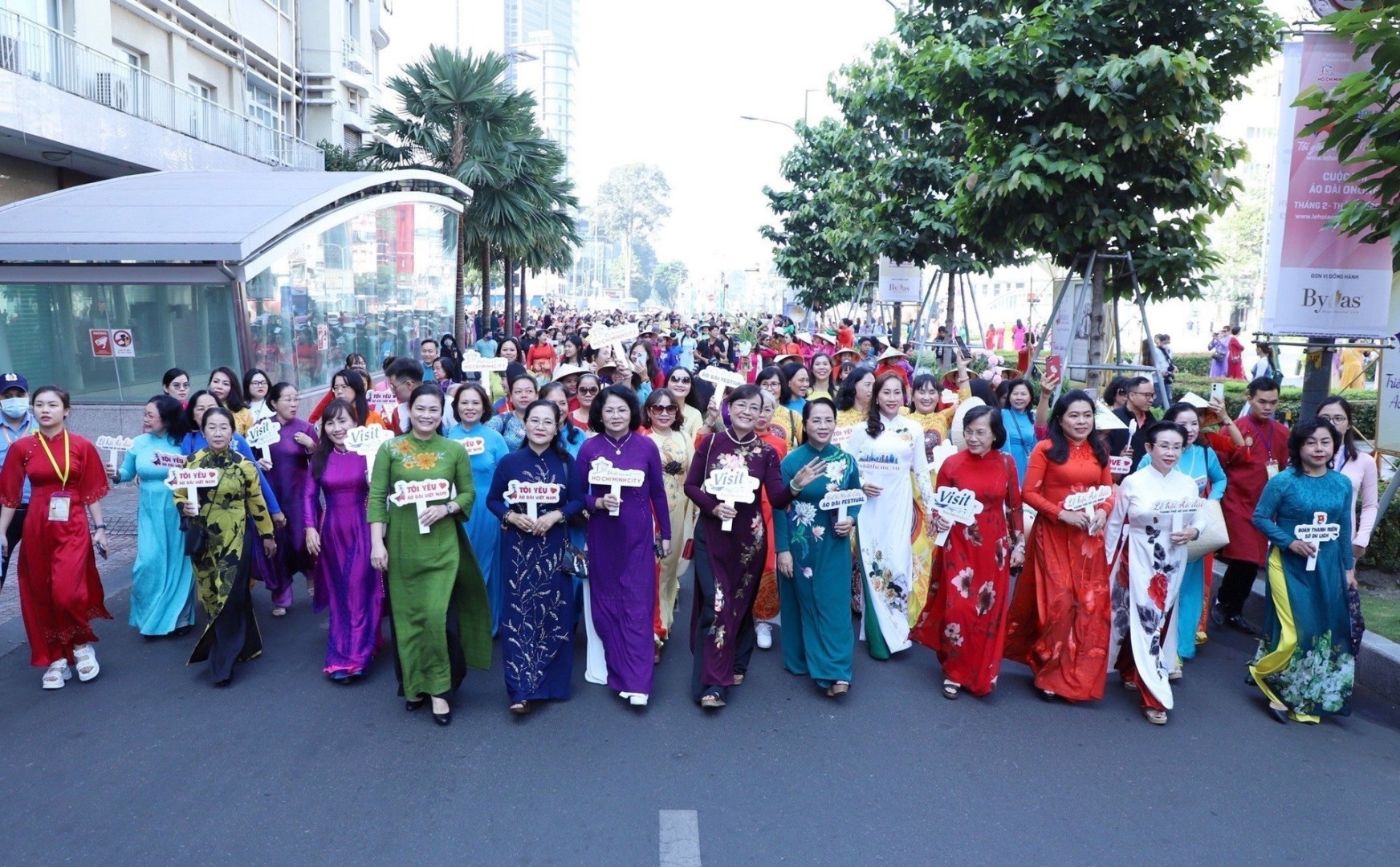
Hanoi Tourism Ao Dai Festival 2023
Taking place from October 27-30, the Hanoi Tourism Ao Dai Festival 2023 featured a series of cultural activities to promote the elegant beauty of Ao Dai and Hanoi tourism.
Festival-goers were treated to a feast of vibrant colours, courtesy of collections of Ao Dai in various colours and styles tailored by renowned designers and fashion brands from around the country, such as Viet Bao, Quang Hoa, Cao Minh Tien, Ngoc Han, OZ Design House, and La Sen Vu. This year’s highlight was the “Ao Dai street,” named “Dao Buoc Ho Guom” (Strolling around Sword Lake), which recreated a cultural and historical space featuring symbols of the capital’s thousand-year history, including models of craft villages, the West Lake lotus, the One Pillar Pagoda, Thang Long Imperial Citadel, and the Quan Chuong Gate.
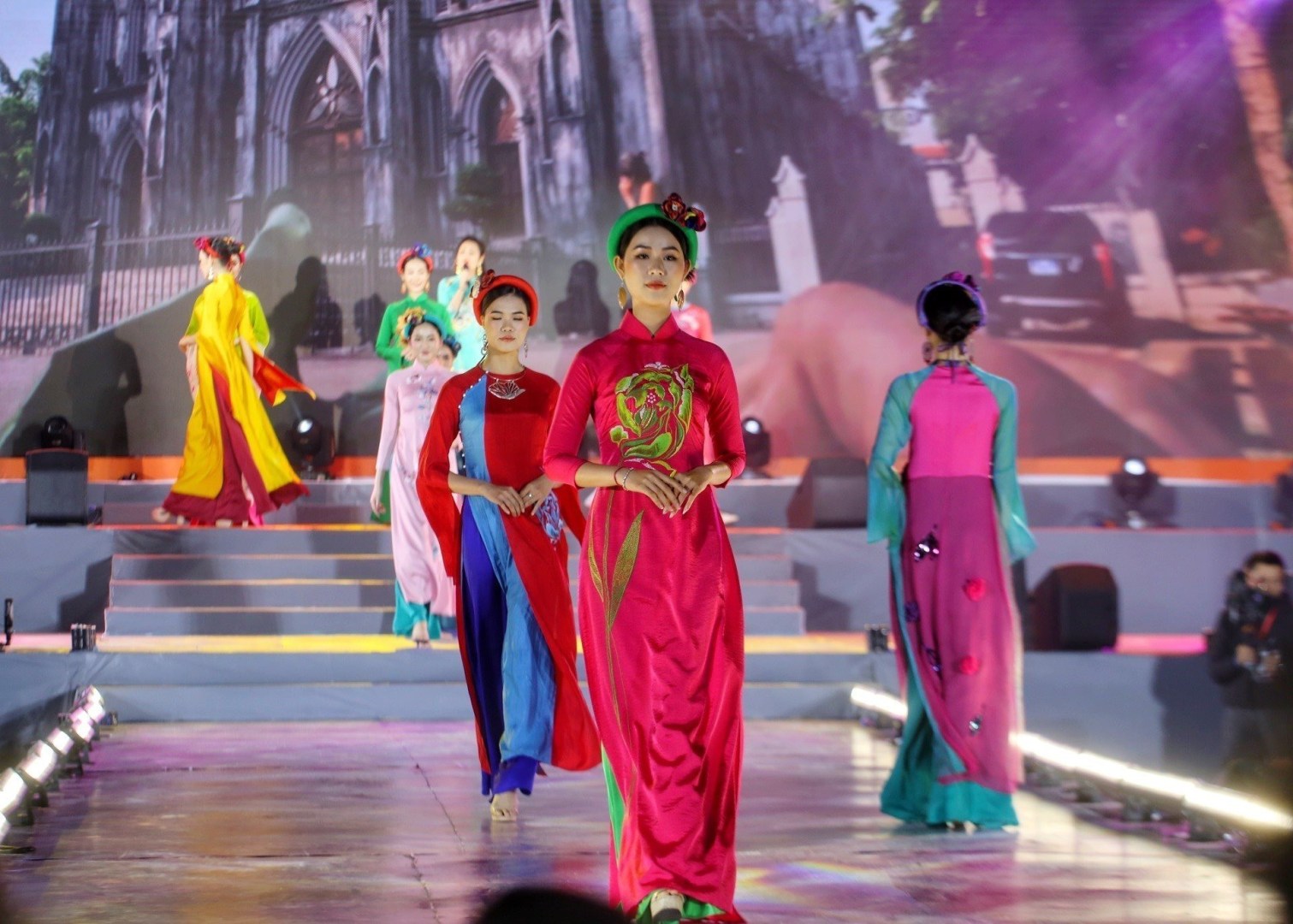
The festival’s exhibition spaces had 60 booths introducing archived photos, Ao Dai designs from popular brands across the country and tourism products.
Other activities include a seminar on the orientation and development of Ao Dai in the community and its connection to tourism, the musical programme “Nhip Pho” (Street Rhythm), Ao Dai dance performances, and Ao Dai flashmob dances.
Deputy Director of Hanoi Department of Tourism Nguyen Hong Minh said that the festival aims to promote Hanoi as a “safe, friendly, and attractive” destination, attracting more domestic and foreign travelers and gradually positioning itself as an annual activity of the city’s tourism./.
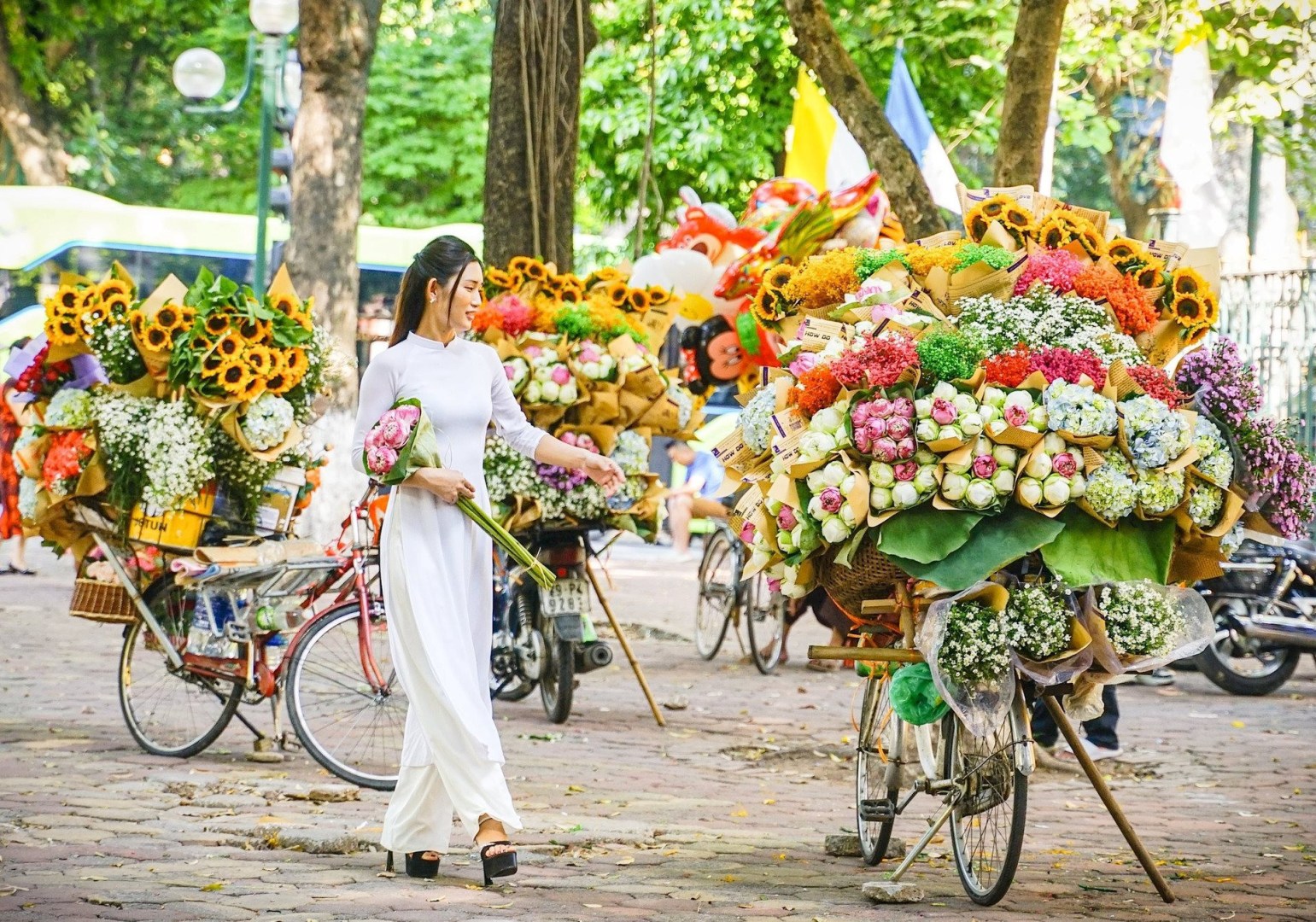
This post was originally published on this site be sure to check out more of their content.




